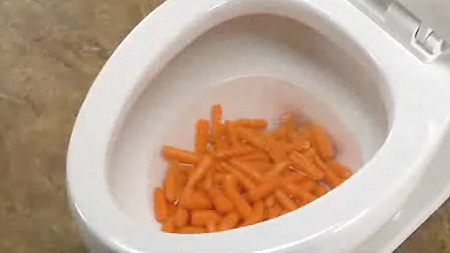Is it Rational to Dispose of Food in the Toilet?
Is it Rational to Dispose of Food in the Toilet?
Blog Article
The content following next pertaining to What Can Happen If You Flush Food Down the Toilet? is particularly engaging. You should read it.

Intro
Many individuals are frequently confronted with the predicament of what to do with food waste, specifically when it pertains to leftovers or scraps. One usual inquiry that occurs is whether it's alright to flush food down the commode. In this post, we'll look into the reasons that people could think about purging food, the repercussions of doing so, and different techniques for correct disposal.
Reasons why individuals could consider purging food
Absence of awareness
Some individuals may not recognize the potential damage caused by flushing food down the commode. They might mistakenly believe that it's a harmless technique.
Ease
Flushing food down the bathroom might seem like a fast and very easy remedy to dealing with undesirable scraps, especially when there's no nearby trash can available.
Laziness
In some cases, people might merely select to flush food out of sheer idleness, without taking into consideration the repercussions of their actions.
Consequences of flushing food down the commode
Ecological impact
Food waste that winds up in waterways can contribute to air pollution and damage marine communities. In addition, the water utilized to purge food can strain water sources.
Plumbing concerns
Flushing food can bring about blocked pipelines and drains, triggering expensive pipes repairs and troubles.
Types of food that ought to not be purged
Coarse foods
Foods with fibrous textures such as celery or corn husks can get entangled in pipelines and cause blockages.
Starchy foods
Starchy foods like pasta and rice can absorb water and swell, leading to blockages in pipelines.
Oils and fats
Greasy foods like bacon or food preparation oils must never ever be flushed down the commode as they can strengthen and trigger clogs.
Proper disposal techniques for food waste
Using a waste disposal unit
For homes equipped with garbage disposals, food scraps can be ground up and purged via the plumbing system. However, not all foods are suitable for disposal in this way.
Recycling
Specific food product packaging products can be reused, lowering waste and decreasing ecological effect.
Composting
Composting is a green means to dispose of food waste. Organic materials can be composted and used to improve dirt for horticulture.
The significance of proper waste administration
Reducing environmental injury
Correct waste monitoring techniques, such as composting and recycling, help lessen air pollution and preserve natural resources for future generations.
Securing pipes systems
By preventing the practice of flushing food down the commode, home owners can protect against costly plumbing fixings and maintain the honesty of their plumbing systems.
Final thought
In conclusion, while it might be tempting to flush food down the bathroom for comfort, it's important to comprehend the potential consequences of this action. By taking on correct waste administration methods and dealing with food waste responsibly, people can contribute to healthier pipes systems and a cleaner atmosphere for all.
FLUSH FOOD DOWN THE TOILET?
FLUSHING FOOD CAN CAUSE BLOCKED DRAINS IN YOUR HOME
All of the plumbing fixtures in your home are connected to the same sewer pipe outside of your home. This outdoor sewer pipe is responsible for transporting all the wastewater from your home to the Council sewer mains. Even small pieces of food that go down the kitchen sink can cause problems for your sewer. It should therefore be obvious that flushing larger bits of food, such as meat, risks a clog in either the toilet itself or the sewer pipes. Flushing greasy food is even more problematic because oil coagulates when it cools, coating the interior lining of your pipes.
THE TOILET IS NOT A BIN
Food isn’t the only thing that people shouldn’t be flushing down the toilet. People use the toilet to dispose of all kinds of things such as tampons, makeup wipes, dental floss, kitty litter and even underwear. Water goes to great lengths to educate residents about the high costs and stress placed on wastewater treatment systems simply from people flushing the wrong stuff down the toilet. It costs taxpayers millions of dollars each year, and homeowners thousands in blocked drain repairs.
FLUSHING FOOD IS A WASTE OF WATER
Flushing food is a waste of our most precious resource - water. In June this year Level 1 water restrictions were introduced to protect water supply from drought conditions. Much of New South Wales continues to be affected by prolonged drought with recent figures revealing up to 97 per cent of the state remains in drought. Depending on whether you have a single or dual flush toilet, every single flush uses between five and 11 litres of water. In the current climate this is a huge amount of water to be wasting on flushing food that should be placed in the bin (or better yet, the compost).
https://www.jabplumbingsolutions.com.au/blog/can-you-flush-food-down-the-toilet

I was brought to that article about through an associate on another blog. Please take the opportunity to promote this entry if you appreciated it. Thank-you for taking the time to read it.
Book Report this page